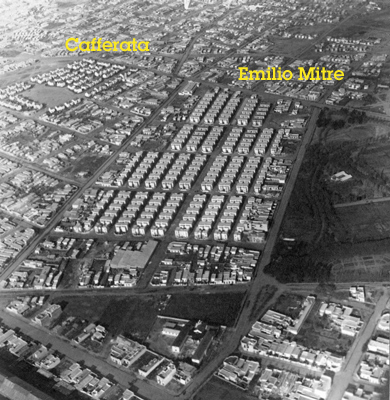In post #3 of this series, an important point might easily go unnoticed:
“the national government never desired to be the sole provider of welfare in Argentina. They wanted to develop a model to demonstrate to private investors that housing projects were viable & could benefit everyone.”
All the projects written about thus far were funded either by the Argentine government, union groups or religious donations. Where were those elusive private investors?
Only one firm accepted the challenge, the Compañía de Construcciones Modernas (CCM). Owned & operated by rich Brits who had previously built the railroads, they wanted to make even more cash. They promised to build 10,000 units in only 5 years as long as the land used was within 4 blocks of their train lines. This also applied to trolleys since the Brits owned all of them except the Lacroze line. Pretty ambitious idea, but it was a clever way to ensure the prosperity of their transit system. Funds were obtained by issuing government bonds at 66% of the property value. It seemed like everyone would gain from this project.
Surprisingly enough, the CCM was founded in 1913 even before government organizations & the Catholic church began their own projects. In the end, all these groups competed with each other & were affected by the same world crises. The CCM built 5 different projects (a total of 4,239 units) by the time their contract expired… a far cry from 10,000. Their houses were much more expensive than those offered by the CNCB, so the government rescinded their contract in 1929. No more CCM.
The five CCM projects are very easy to see on a city map because of their high density layout. City blocks were divided in 4 or sometimes more sections. Streets are just wide enough for 2 vehicles (usually one parking lane & one traffic lane). The houses are stacked together like dominoes, repeated as many times as they could fit. The most unique thing about CCM houses is that they all have 2 floors. Because lot space was so narrow, the CCM decided to build up instead of out.
Another striking feature is the boxiness of the houses… over 4,000 houses in Buenos Aires look like big ol’ boxes 🙂 Since the general design is repeated ad nauseum, over the next posts of this series I’ll show a few pics of each of the projects & mention a couple interesting things I saw while walking around. Remember that these were all built in the 1920’s.
Most of these houses in 8 city blocks have been highly modified over the years, but there are still a few original structures left. The second pic shows how narrow the streets are. Street names echo social themes like Industry, Commerce & Progress. What really destroys the character of the neighborhood is not the modifications to houses by their owners but the highway that chops right through it (& Parque Chacabuco as well). Be sure to thank the military junta for that.
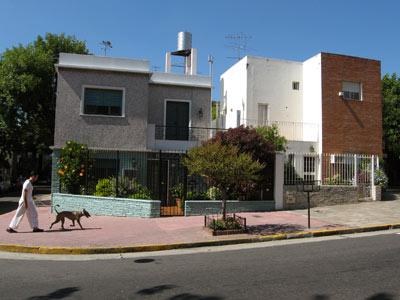
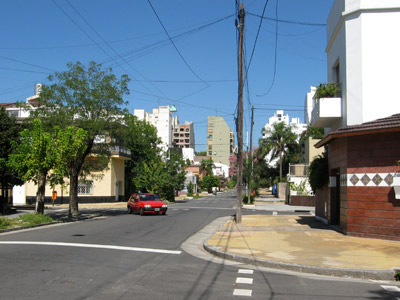
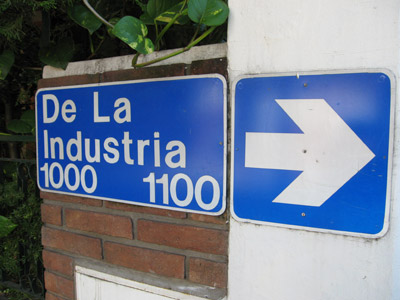
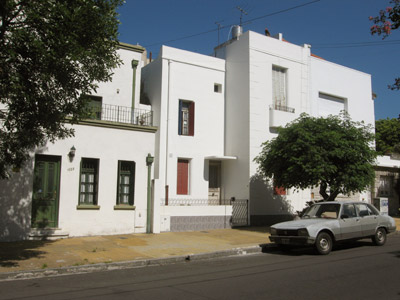
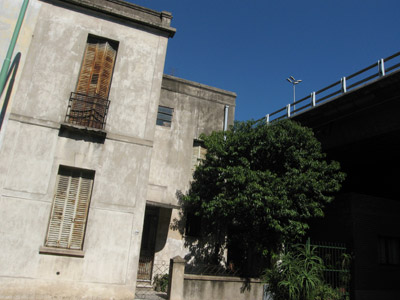
Update (29 Jan 2011): If you like legal details & can read Spanish, the CCM contract with the city government has been published online in its entirety by Profesor Sebastián Matías Otero. The extensive bibliography is an unexpected treat. Below is a aerial view posted by Otero of Barrio Emilio Mitre taken from “10000 casas, la habitación cómoda, higiénica y barata” (Buenos Aires) MCBA, 1922.
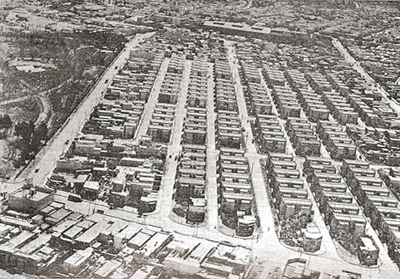
Update (14 Jan 2013): The incredibly detailed webpage Historia y Arqueologia Marítima has made available a collection of aerial photographs taken circa 1925 by friends Juan Bautista Borra & Enrique Broszeit. Pioneers in the field, they captured the changing look of Buenos Aires from a unique perspective… and naturally quite a few housing projects which were the newest thing:
Direct link → Master list of all Housing for the Masses posts.

